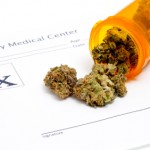I recently read a New York Times article by Jane Brody titled "Tapping Medical Marijuana's Potential" in which she notes the long history of medical, spiritual and recreational use of the drug and mentions it contains a multitude of chemicals (400 plus) in its raw form. She confirmed my thought that if people are to use the drug for medical reasons, a joint or a pipe certainly isn't the optimal modality for administering it, When smoked, the number of compounds released multiplies by a factor of five (over 2,000 chemicals) and some are felt to lead to risks similar to those of tobacco.
As of November, 2013, twenty states and the District of Columbia have medical marijuana clinics; two states have even legalized its recreational use and a Gallup poll in October reported fifty-eight percent of Americans support legalizing marijuana for non-medical purposes. That's way up from the 12% in 1969 and roughly a third at the start of the 2000s who favored changing the laws concerning marijuana. Subgroups in this survey that still opposed legalization were those sixty-five and older and those who identified themselves as Republicans ( 62% of Democrats and 65% of Independents {up 12% since 2011} favored the change). Even the over sixty-five group had a considerable (+14%) increase in the last two years of those who are in favor of loosening the laws on the drug.
I'm going to stick to comments on medical marijuana, and not get into a discussion of recreational use.
Cornell University Law School's Legal Information Institute website details 21 USC § 812 Schedules of Controlled Substances. There are five levels of these drugs (or substances) and the most tightly controlled is Schedule I, drugs/substances (D/S) with a high potential for abuse and no currently accepted medical use in treatment in the United States. Additionally there is a lack of accepted safety for those D/S even if they are given under medical supervision. There's a long list of Schedule I drugs including heroin, LSD, mescaline and GHB (the date rape drug). But marijuana is right alongside those, mostly for political, as opposed to scientific reasons.
Schedule II D/S have a high potential for abuse, but do have a currently accepted medical use in this country, some with and others without severe restrictions. Abuse can lead to severe psychological or physical dependence. Opium and cocaine are in Schedule II. Schedule III D/Ss have less potential for abuse, a currently accepted medical use and abuse can lead to moderate or low dependence. Amphetamine and its derivatives are in Schedule III. As you would expect, Schedule IV and V D/S have lower potential for abuse and habituation.
In 2005, the U.S. Supreme Court, discussing California's medical marijuana regulation (voted in under the 1996 Proposition 215) in a case titled Gonzales v. Raich, issued a majority opinion that Congress had the power to prohibit local cultivation and use of marijuana in that state. They did so by case precedent under the Commerce Clause referring back to a 1942 decision about wheat farming. Justice O'Connor, Chief Justice Rehnquist and Justice Thomas dissented with Justice O'Connor writing that the Court's decision was sweeping overreach. She noted the two women who had sued the US Attorney General and the DEA were, in one case, raising a very small number of marijuana plants and, in the other case, relying on locally grown plants. Neither one was engaged in interstate commerce nor even conceivably had enough of the drug to substantially affect such. Both were acting in accordance with California law.
In 2008, an article in CMAJ, the Canadian equivalent of JAMA, reviewed safety studies on marijuana used medically and noted that short-term usage of the then existing forms of medical cannabinoids "appeared to increase the risk of non-serious adverse effects (the most common being dizziness), but not serious ones. The problem was the risks in longer-term use weren't well defined, even in that country which had been the pioneer in 2001 by legalizing medical usage of the drug.
A 2009 Department of Justice memorandum, directed at "Selected United States Attorneys," discussed "Investigations and Prosecutions in States Authorizing the Medical Use Of Marijuana." It firmly held to the DOJ being committed to enforcing the Controlled Substances Act (CSA) in all states, saying Congress still felt marijuana was a dangerous drug; its illegal distribution and sale was a serious crime and its sale provided gangs and cartels with oodles of money. While adhering to the CSA was still a clear priority, DOJ felt federal resources should not be expended in the pursuit of individuals who use marijuana medically in compliance of state laws.
An April, 2010 article in NEJM, written by two attorneys from the University of Maryland School of Law, mentions that the American Medical Association had recently voted for reviewing marijuana's status as a Schedule I drug. At that time, fourteen states had passed laws to allow the medical uses of the drug and over a dozen more were considering the idea. But there was very little if anything being done to "advance the development of standards" concerning dosing, packaging, potency, quality or purity issues. Experts in this country had urged reclassification to Schedule II as a means to allow rigorous testing of possible benefits, dosing and delivery means.
In early 2012, Mayo Clinic Proceedings published two articles and an editorial on Cannabis. The first article reported a case series of 98 patients with "Cannabinoid Hyperemesis." The first term meant chemicals found in marijuana and the second implies severe, persistent vomiting. The more common use of the medical term refers to the one to two percent of women who have continued, severe, nausea and vomiting during pregnancy…a condition termed hyperemesis gravidarum (gravid means pregnant).
A superb, long and detailed review by J. Michael Bostwick, MD of Mayo's Department of Psychiatry and Psychology has the intriguing title, "Blurred Boundaries: The Therapeutics and Politics of Medical Marijuana." and is available on an NIH website. It is well balanced and covers many facets of the history and pharmacology of the drug with caveats on its use in young individuals, an association with psychosis (marijuana may or may not be causative, but its use appears to have a distinctly negative effect on those already psychotic), the pros and cons of using it medically, and the currently available pharmaceutical cannabinoids.
The New York Daily News, on January 22, 2012, had an article titled "Marijuana-based drug Sativex may get FDA approval." A followup published August 14, 2013 in an industry online news source, Fierce Pharma, said the European pharmaceutical firm GW now had an American partner company working with the FDA on a Phase III trial for the drug in treating cancer pain and spasticity in multiple sclerosis patients. The oral spray has already been approved for patient use in the U.K., Canada, Denmark, Poland, Austria and Sweden. It has a mixture of THC, the psychoactive component, and cannabidiol, a non-psychoactive cannabinoid that can lessen the negative effects of THC while, potentially, offering reduced anxiety and anti-seizure effects of its own.
An October 3, 2013 article in Time Magazine's World section was titled "Canada Rolls Out a '$1 Billion" Privatized Medical Marijuana Industry." Medical marijuana has been legal in Canada for more than a decade but was strictly regulated. In a country whose population as of July, 2013, was estimated to be just over thirty-five million (versus the United States's November, 2013 estimate of 317 million), there are almost 40,000 registered medical marijuana users. The Canadian government thinks that there will be over eleven times that number by 2024 and has recently voted to shift to private companies, as opposed to Health Canada, controlling the drug's distribution by mail-order, but still under tight restrictions.
What next in the sweeping changes concerning marijuana? I'd like to see well-controlled prospective medical studies, but those can't happen until (and unless) it becomes a Schedule II drug.





